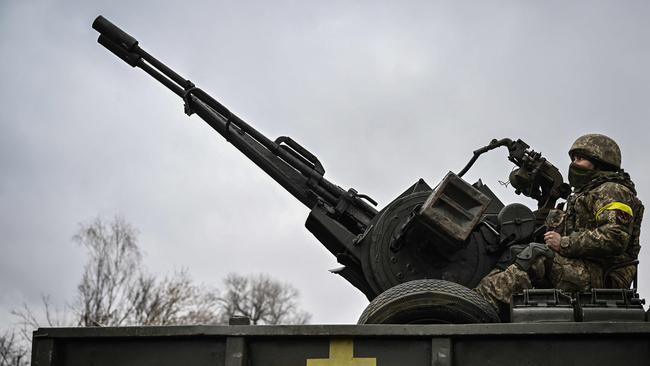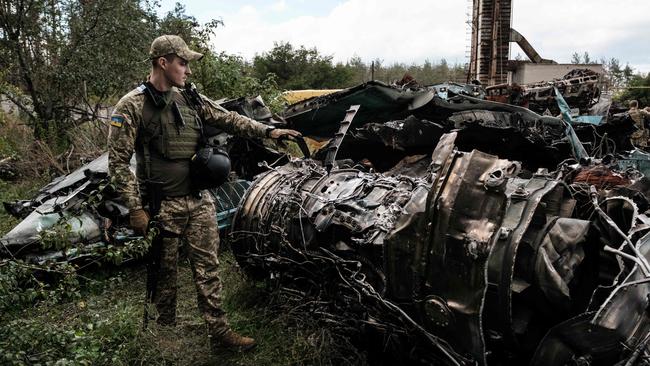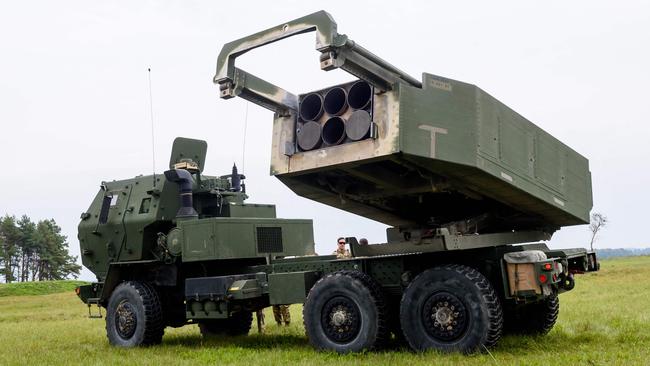Failure to control Ukraine’s skies betrays key flaw in Russia’s war strategy
Without air supremacy, Moscow cannot counter Kyiv’s offensive or target precisely, relying instead on drones and missiles.

Russia’s struggling invasion of Ukraine has faced problems from poor co-ordination to unmotivated soldiers, but overshadowing and aggravating all was a critical blunder in the war’s early days, say Western military officials: failure to win control of Ukraine’s skies.
Without air superiority, Russia has been unable to stop Ukrainian attacks on its soldiers with US-supplied M142 High Mobility Artillery Rocket Systems, or Himars, and other weapons. Kyiv’s forces have capitalised on Russia’s limited ability to respond by retaking hundreds of square miles of territory from the invading army since early last month.
Russia has recently reacted to Ukraine’s battlefield successes by unleashing deadly attacks on civilian targets using missiles and drones. But even those strikes betray weakness in Moscow’s air strategy, Western military analysts say, because it must rely on remote aircraft rather than piloted planes, out of fear they will be shot down.
“Failure to achieve air supremacy is one of the decisive things that cost Russia their advantage in the war,” said Jakub Janovsky, a military analyst with Oryx, an open-source intelligence consulting firm that has tracked equipment losses throughout the war.

Russia’s Defence Ministry didn’t respond to a request for comment on its air war in Ukraine.
When Russia launched its large-scale invasion on February 24, military experts on both sides of the fight assumed Moscow would target Ukraine’s air defences and quickly work to eliminate them before pushing further. That was the approach US forces took in both Gulf wars and Libya because it helps to protect attacking aircrews and ground or naval forces the aircraft support.
But after Russia achieved some initial successes hitting Ukraine’s anti-aircraft systems and disrupting its communications backbone, Kyiv regrouped and managed to thwart Russian air attacks. By early March, Ukraine was shooting down growing numbers of Russian planes and helicopters. Ukraine’s air force, despite early losses, kept flying and engaged Moscow’s pilots in dog fights.
By spring, Russian warplanes were staying in Russian airspace or over parts of Ukraine firmly under Moscow’s control. Russian bombers were launching cruise missiles from behind the protection of Moscow’s air-defence systems. Russian military helicopters in Ukraine moved increasingly cautiously.
As a result of that air force hesitation, Russian ground troops that might have relied on their planes and helicopters to provide covering fire instead sat exposed to attacks from Ukrainian aircraft, drones and artillery.

Ukraine’s ability to protect its air defences in the war’s opening weeks ranks alongside the defence of Kyiv, the capital, in accomplishments that allowed its government and military to retain control over most of the country despite relentless Russian attacks, say analysts.
“The Ukrainians are in a far stronger position than they would be if the Russians had achieved air supremacy,” said Douglas Barrie, a senior fellow for military airspace at the International Institute of Strategic Studies, a think tank in London.
Unlike Ukraine’s fight against Russian ground forces, which from the start was aided enormously by donated Western weapons, its air defence has relied largely on Soviet-era systems that Ukraine has maintained and improved over three decades. In many ways, Russia’s failure to disable the systems is more notable because Moscow uses the same equipment, including S-300 long-range surface-to-air missiles, or SAMs, plus smaller and highly mobile Buk and Tor launchers, analysts say.
When the Soviet Union collapsed, Ukraine had a particularly large number of the systems and still has a high ratio of systems to territory compared with standards of countries in the North Atlantic Treaty Organisation, said Mykola Bielieskov, a research fellow at Ukraine’s National Institute for Strategic Studies, a government think tank.
Mr Bielieskov said Ukraine was able to preserve its air defences and part of its air force by moving planes and defensive systems from their normal locations and dispersing them. He credited US intelligence before the war with providing Ukraine enough warning to protect its equipment. Intelligence early in the invasion on the timing and direction of attacks also helped Ukraine position equipment where it could help most, he said.
“Russia bombed airfields and SAM radars, but the strikes weren’t successful,” Mr Bielieskov said.
The Kremlin initially hoped to gain control of Ukraine within about three days, expecting a groundswell of support after toppling the government, and so might have limited its opening attacks, said Mr Barrie.
“At the beginning, it was almost as if they didn’t want to break too much because they wanted the country to run smoothly” after their expected takeover, Mr Barrie said. Russian forces also don’t appear to have launched follow-up attacks on missile batteries, radar installations or command-and-control centres to ensure they had been disabled – a standard practice among NATO members, he said.
Further helping Ukraine was Russian air forces’ lack of practice in complex suppression of air defences, said Mr Bielieskov. Such manoeuvres require careful co-ordination of electronic-warfare assets with attack aircraft and missile strikes.
By mid-May, Russian losses in Ukraine had fallen to fewer than 10 planes and helicopters a week, compared with more than 60 a week in early March, according to Oryx data. Since Ukraine launched its offensive in the east and south last month, which quickly retook thousands of square miles of territory and inflicted heavy losses on Russian ground troops, its losses of piloted aircraft have risen slightly.

“The losses indicate the air force is being used as a fire brigade when local forces are in trouble,” said Mr Janovsky.
Kyiv last week said it had downed four Russian helicopters within 18 minutes. The report wasn’t independently verified.
Ukraine, which has far fewer aircraft than Russia, also flies cautiously and has suffered losses. But its support from local populations, extensive use of drones and access to the US intelligence have helped it offset its lack of air superiority. Additionally, Russian forces in Ukraine have limited ability to shoot down Ukrainian aircraft, which gives them more leeway to operate. Ukrainian planes have recently been attacking Russian air defences in territory Moscow controls.
Now Moscow has replaced piloted planes with missiles and drones – including large numbers supplied by Iran – for strikes deep into Ukraine. Many have targeted civilian infrastructure such as power plants. A lot of the strikes are poorly targeted, resulting in widespread death and injuries.
In response, NATO members on Wednesday pledged to give Kyiv additional modern air-defence units and to create a comprehensive air-defence network. While that complex technical work will take time, it could give Ukraine one of Europe’s most advanced defences against air strikes of all kinds, military officials say.
– The Wall Street Journal



To join the conversation, please log in. Don't have an account? Register
Join the conversation, you are commenting as Logout